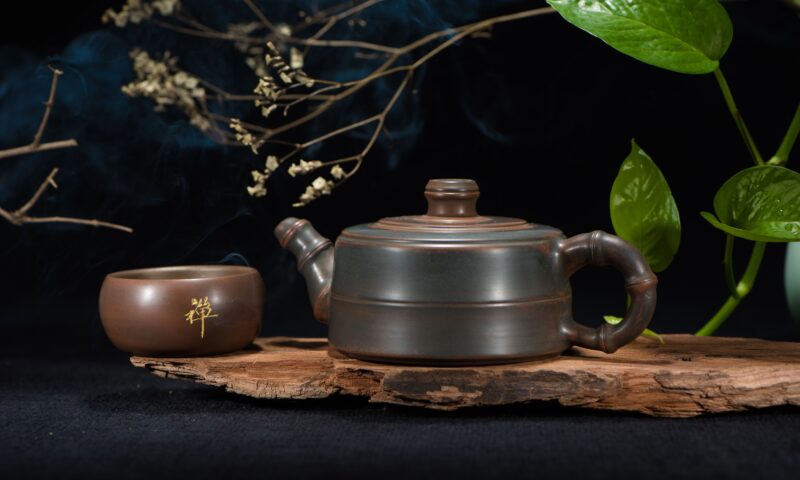- The Timeless Appeal of Japanese Tea Ceremony
- Understanding Chado: The Way of Tea
- Types of Tea Ceremony Experiences for Visitors
- Top Locations for Tea Ceremony Experiences
- Elements of a Traditional Tea Ceremony
- Essential Etiquette for Tea Ceremony Participants
- The Seasonal Nature of Tea Ceremony
- Understanding Matcha: The Heart of Tea Ceremony
- The Relationship Between Tea Ceremony and Other Japanese Arts
- Making the Most of Your Tea Ceremony Experience
- Modern Relevance: Why Tea Ceremony Matters Today
- Bringing the Spirit of Tea Ceremony Home
The Timeless Appeal of Japanese Tea Ceremony
In a world of constant movement and digital distraction, the Japanese tea ceremony (chado or sado, 茶道) stands as a testament to mindfulness, presence, and the art of slowing down. This centuries-old ritual transforms the simple act of preparing and drinking tea into a choreographed art form that embodies core Japanese cultural values: harmony (wa), respect (kei), purity (sei), and tranquility (jaku).
For visitors to Japan seeking authentic cultural experiences, participating in a traditional tea ceremony offers a window into Japanese aesthetics, philosophy, and social customs that few other activities can provide. Whether you’re planning your first trip to Japan or seeking deeper cultural immersion on a return visit, this guide will help you understand, find, and fully appreciate authentic tea ceremony experiences across Japan.
Understanding Chado: The Way of Tea
Chado (literally “the way of tea”) is more than just a beverage service—it’s a comprehensive cultural practice that incorporates elements of Zen Buddhism, architecture, ceramics, flower arrangement, calligraphy, and seasonal awareness. Every movement, every utensil, and every aspect of the environment carries meaning within this ritualized practice.
Historical Roots and Evolution
Tea was first introduced to Japan from China in the 9th century, initially as a medicinal drink among Buddhist monks. By the 12th century, Japanese aristocrats had begun holding tea-tasting parties, but it wasn’t until the 16th century that tea ceremony as we know it today took shape.
Sen no Rikyu (1522-1591), considered the most influential figure in tea ceremony history, refined the practice into a spiritual discipline that emphasized simplicity, naturalness, and subtle elegance, rather than opulence or overt display. His philosophy, which deliberately countered the ornate aesthetic prevalent in other arts of the time, continues to influence Japanese cultural values across numerous disciplines.
Today, three main schools of tea ceremony descended from Rikyu’s teachings—Urasenke, Omotesenke, and Mushakojisenke—continue to preserve and transmit this cultural heritage, with Urasenke being the most accessible to international visitors.
The Philosophy Behind the Practice
The famous Japanese saying “Ichigo, ichie” (一期一会, “one time, one meeting”) is central to tea ceremony philosophy. This concept reminds participants that each gathering is a once-in-a-lifetime encounter that can never be exactly replicated. It encourages full presence and appreciation of the moment—a radical notion in our era of distraction and multitasking.
Other philosophical principles include:
- Wabi-sabi – Finding beauty in imperfection and impermanence
- Ma – Appreciation of negative space and intervals
- Shokyaku tannen – Selfless hospitality
- Kichizukuri – Doing one’s utmost in preparation
Types of Tea Ceremony Experiences for Visitors
Japan offers a range of tea ceremony experiences catering to different levels of interest, time constraints, and budgets. Understanding these options will help you choose the best fit for your visit.
Tourist-Oriented Introduction (30-60 minutes)
Perfect for first-time visitors with limited time, these abbreviated experiences typically include:
- Basic explanation of tea ceremony history and customs
- Demonstration of matcha preparation
- Opportunity to prepare tea yourself
- Sampling of Japanese sweets (wagashi) and matcha tea
- Photo opportunities
Cost: ¥2,500-¥5,000 ($17-$35) per person (rates typically apply for group sessions of 6-12 participants)
Best for: First-time visitors, families with children, those with limited time
Authentic Tea House Experience (1-2 hours)
For a more comprehensive introduction to tea ceremony:
- More detailed cultural and historical context
- Traditional setting in a tea room or garden
- Proper etiquette instruction
- Full demonstration of tea preparation
- Higher quality tea and seasonal wagashi
- Some English explanation (though may be limited)
Cost: ¥5,000-¥10,000 ($35-$70) per person (for small groups of 4-8 participants)
Best for: Cultural enthusiasts, repeat visitors to Japan, those interested in Japanese aesthetics
Private or Semi-Private Ceremony (2+ hours)
For the most immersive experience:
- Personalized instruction from a tea master
- Traditional tea house setting
- Full seasonal ceremony
- Highest quality tea utensils and wagashi
- Deeper discussion of philosophy and meaning
- Opportunity for questions and conversation
Cost: ¥15,000-¥50,000 ($100-$350) per person or group (for intimate settings of 2-4 participants; private sessions typically have fixed pricing regardless of party size)
Best for: Serious cultural students, Japanese art enthusiasts, those seeking authentic immersion
Top Locations for Tea Ceremony Experiences
Kyoto: The Heart of Tea Culture
As Japan’s ancient capital and cultural center, Kyoto offers the richest variety of tea ceremony experiences:
- Urasenke Headquarters – Occasional public demonstrations by the most prestigious tea school
- Camellia Tea Ceremony – English-friendly ceremonies in a machiya townhouse
- En Tea House – Accessible ceremonies with detailed English explanation
- Tea Ceremony Koto – Ceremonies in a traditional tea room with garden views
- Daitokuji Temple – Tea experiences in a historic Zen temple complex
Tokyo: Accessible Tradition
Japan’s capital offers convenient options for visitors with limited time:
- Happo-en Garden – Tea ceremony in a beautiful traditional garden setting
- Nadeshiko Tea Ceremony – Women-led ceremonies with kimono experience options
- Jugetsudo Tea House – Modern setting with traditional practice
- Tokyo Grand Tea Ceremony – Annual October event with multiple ceremonies
Other Notable Locations
- Kanazawa – Known for preserved samurai and geisha districts with traditional tea houses
- Uji (near Kyoto) – Famous tea-producing region with unique tea experiences
- Matsue – Home to the Fumai-style tea ceremony and excellent museums
- Fukuoka – Experiences featuring the less-known but fascinating Hakata-style ceramics
Elements of a Traditional Tea Ceremony
Understanding the components of a full tea ceremony will help you appreciate what you’re experiencing, even in abbreviated tourist versions.
The Setting: Tea Room (Chashitsu)
Traditional tea ceremonies take place in purpose-built rooms or houses characterized by:
- Nijiriguchi – A small, low entrance requiring guests to crouch (symbolizing humility)
- Tatami floors – Straw mats that define the room’s size and layout
- Tokonoma – Alcove displaying a hanging scroll and/or seasonal flower arrangement
- Minimal decoration – Clean lines and natural materials embodying wabi-sabi aesthetics
- Natural light – Often diffused through paper screens
Essential Equipment
- Chawan – Tea bowl, often a valuable ceramic art piece
- Chasen – Bamboo whisk for preparing matcha
- Chashaku – Bamboo scoop for measuring matcha powder
- Kama – Iron kettle for heating water
- Furo/Ro – Portable hearth or floor hearth (seasonal)
- Fukusa – Silk cloth used by the host for cleaning utensils
Typical Procedure
While ceremonies vary by school, season, and formality, most follow this general structure:
- Purification – Guests wash hands and mouth at a stone basin (tsukubai) before entering
- Entering the tea room – Through the small nijiriguchi entrance
- Viewing the tokonoma – Appreciating the scroll and flowers
- Initial sweets – Served to balance the bitterness of the tea
- Preparation of koicha – Thick tea prepared by the host with deliberate, graceful movements
- Drinking of koicha – Shared from a single bowl in formal ceremonies
- Intermission – In full ceremonies, guests may step outside briefly
- Preparation of usucha – Thin tea, with each guest receiving an individual bowl
- Appreciation of utensils – Examining the tea equipment used
- Formal conclusion – Guests depart, with the host seeing them off
Most tourist experiences offer an abbreviated version focusing on usucha (thin tea) only.
Essential Etiquette for Tea Ceremony Participants
While hosts understand that foreign visitors may not know all the rules, making an effort to observe basic etiquette shows respect for the tradition.
Before the Ceremony
- Arrive 10-15 minutes early
- Dress modestly and neatly (business casual is appropriate)
- Remove jewelry that might damage tea equipment
- Turn off or silence electronic devices
- Remove shoes where indicated
- Wash hands at the tsukubai if available
During the Ceremony
- Sit in seiza (kneeling) if possible, or cross-legged if you cannot manage seiza
- Follow the host’s cues or the most senior guest’s example
- Move slowly and deliberately
- Speak softly and keep conversation minimal
- When receiving tea, place it between yourself and the next guest, bow slightly
- Turn the bowl 2-3 times clockwise before drinking (to avoid drinking from the decorative front)
- Drink in 2-3 sips, wiping the rim with your finger or napkin if provided
- Admire the bowl after drinking, particularly the design elements
Common Mistakes to Avoid
- Stepping on the borders between tatami mats
- Pointing with the feet toward the tokonoma or host
- Taking photos without permission
- Touching tea equipment without invitation
- Leaving before the ceremony concludes
- Adding sugar or other additives to the matcha
Don’t worry about making minor mistakes—hosts leading tourist experiences are accustomed to guiding beginners through the process.
The Seasonal Nature of Tea Ceremony
One of the most profound aspects of tea ceremony is its attunement to the changing seasons, reflected in every element of the experience.
Seasonal Considerations
- Equipment variations – Summer uses a portable brazier (furo) while winter uses a sunken hearth (ro)
- Scroll themes – Change to reflect seasonal imagery or appropriate philosophical concepts
- Flower arrangements – Feature seasonal blooms or plants
- Wagashi designs – Reflect seasonal motifs like cherry blossoms, autumn leaves, or snow scenes
- Utensil selection – Colors and materials appropriate to the season
Best Seasons to Experience Tea Ceremony
While tea ceremonies occur year-round, certain times offer special experiences:
- Late October/Early November – Autumn leaves and the transition to the ro (sunken hearth)
- Late March/Early April – Cherry blossom season with special flower-themed ceremonies
- Early January – New Year’s ceremonies (hatsugama) represent fresh beginnings
- June – Firefly-viewing tea ceremonies in certain locations
Understanding Matcha: The Heart of Tea Ceremony
The distinctive powdered green tea used in Japanese tea ceremony deserves special attention, as it differs significantly from other teas familiar to Western palates.
What Makes Matcha Unique
- Cultivation – Shade-grown for weeks before harvest, increasing chlorophyll and amino acid content
- Processing – Stone-ground into a fine powder, allowing the entire leaf to be consumed
- Preparation – Whisked directly into water, rather than steeped and removed
- Flavor profile – Complex umami character with vegetal notes and natural sweetness beneath surface bitterness
- Cultural significance – Associated with Zen Buddhism and mindfulness practices
Grades of Matcha
Not all matcha is created equal:
- Ceremonial grade – Highest quality, used in formal tea ceremonies
- Premium grade – High quality, suitable for casual drinking
- Culinary grade – Less refined, used for cooking and in lattes
Health Benefits
While the focus of tea ceremony is cultural rather than nutritional, matcha does offer notable health benefits:
- Rich in antioxidants (particularly catechins)
- Contains L-theanine, promoting calm alertness
- Supports metabolism and concentration
- Provides vitamins and minerals
The Relationship Between Tea Ceremony and Other Japanese Arts
Tea ceremony doesn’t exist in isolation but is interconnected with numerous other traditional Japanese cultural practices.
Related Traditional Arts
- Ceramics (yakimono) – Tea bowls represent some of Japan’s most valued ceramic art
- Calligraphy (shodo) – Seen in the hanging scrolls and tea room names
- Flower arrangement (ikebana) – Featured in the tokonoma alcove
- Architecture – Tea houses represent a distinct Japanese architectural style
- Garden design – Tea gardens (roji) embody specific aesthetic principles
- Incense appreciation (kodo) – Sometimes incorporated into tea gatherings
Cultural Cross-Pollination
Many of Japan’s most famous cultural figures mastered multiple arts. Sen no Rikyu, for example, influenced not just tea ceremony but also architecture, garden design, and ceramics. This interconnectedness means that appreciating tea ceremony can deepen your understanding of other Japanese arts and vice versa.
Making the Most of Your Tea Ceremony Experience
Preparing in Advance
- Read about basic history and concepts
- Practice sitting seiza (kneeling) for short periods if you plan to try it
- Consider watching video demonstrations online
- Learn a few basic Japanese phrases if possible
- Research the specific venue you’ll be visiting
Questions to Ask During Your Experience
Most hosts welcome thoughtful questions:
- “What makes this tea bowl special?”
- “How does the preparation change with the seasons?”
- “What does the scroll/flower arrangement symbolize?”
- “How long have you been practicing tea ceremony?”
- “What aspects of tea ceremony are most meaningful to you personally?”
After Your Experience
- Thank your host with a slight bow
- Consider purchasing tea or utensils as meaningful souvenirs
- Reflect on the experience through journaling or discussion
- Apply principles like mindfulness and presence to everyday activities
- Explore related Japanese arts that interested you
Modern Relevance: Why Tea Ceremony Matters Today
In our hyper-connected, efficiency-obsessed world, tea ceremony might seem like a curious anachronism. Yet its core principles offer powerful antidotes to modern challenges:
Contemporary Applications
- Mindfulness practice – Tea ceremony epitomizes present-moment awareness
- Digital detox – A rare space free from screens and notifications
- Aesthetic appreciation – Training in noticing subtle beauty
- Slowing down – Deliberate movements counter hurried modern pace
- Social connection – Meaningful interaction free of distraction
- Sensory engagement – Full involvement of all senses
Many Japanese people view tea ceremony not as a museum piece but as a living tradition offering practical wisdom for contemporary life. This explains its enduring appeal both within Japan and increasingly around the world.
Bringing the Spirit of Tea Ceremony Home
While the full formal tea ceremony requires years of study and specific equipment, its core principles can be incorporated into daily life regardless of where you live:
Everyday Applications
- Create rituals around daily beverages, focusing on each step mindfully
- Arrange a small, seasonally changing display in your home
- Practice “one encounter, one opportunity” attention with friends and family
- Incorporate seasonal awareness into meals and activities
- Cultivate appreciation for handmade objects over mass-produced items
- Find beauty in imperfection and signs of age (wabi-sabi)
Participating in a tea ceremony during your visit to Japan offers more than just a tourist experience—it provides a window into a philosophical approach to life that you can carry with you long after your journey ends. By understanding and experiencing this ancient practice, you gain insights not just into Japanese culture, but into universal principles of mindfulness, beauty, and human connection.
Whether you choose a brief tourist introduction or a more immersive private experience, approaching tea ceremony with respect and openness will reward you with memories and insights that transcend ordinary travel experiences. In the simple act of preparing and sharing tea, you’ll discover a profound cultural tradition that continues to offer wisdom and beauty in our modern world.
Written by Treasure-Bloom Editorial Team


